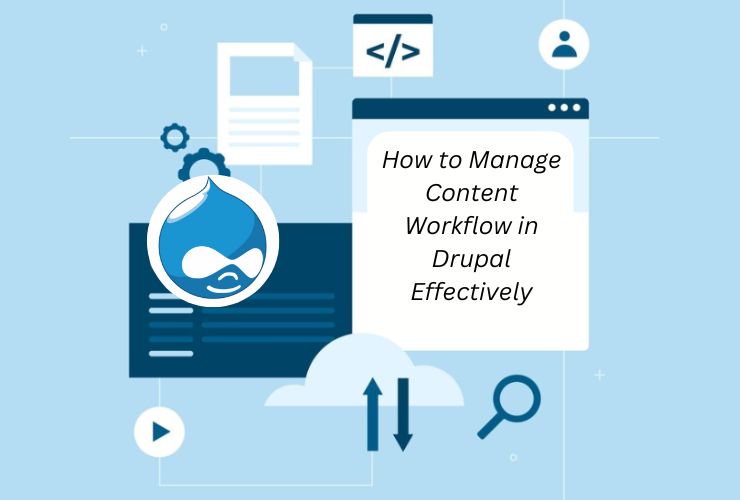Managing your content workflow is one of the most critical ways to maintain a constantly updated Drupal website that is of good quality and current. It has powerful tools and flexible features that make collaboration easy, with great quality control.
What Is Content Workflow in Drupal?
The flow of content from creation to publication is called content workflow. This stage includes drafting, review, approval, and publishing. Drupal allows a streamlined workflow so that teams can work on a task collaboratively: high-quality and on-time.
Top Drupal Features for Content Workflow Management
- Workflow Module
- Create custom workflows based on your requirements.
- Assign specific roles and permissions to each stage of the workflow such as authors, editors, and publishers..
- Content Moderation
- Built-in moderation tools allow you to set up content states, such as Draft, Review, Published.
- Control transitions between states to ensure only approved content goes live.
- Built-in moderation tools allow you to set up content states, such as Draft, Review, Published.
- Role-Based Permissions
- Assign user roles like author, reviewer, and publisher, with permissions tailored to their responsibilities.
- This ensures that team members only access functions relevant to their role.
- Revision Control
- Track and manage changes to content with version history.
- Revert to previous versions if errors occur, providing a safety net.
Steps to Manage Drupal Content Workflow Effectively
- Define Your Workflow
- Identify key stages like Draft → Review → Approval → Publish.
- Assign team members responsible for each stage.
- Implement Workflow Tools
- Use the Workflow module to create, configure, and assign your workflow processes.
- Leverage Content Moderation
- Enable content moderation to control the state of content at every stage.
- Assign specific permissions to move content between states.
- Assign Clear Roles and Permissions
- Define roles such as authors, editors, and administrators.
- Assign permissions to ensure team members can only access features relevant to their role.
- Monitor Workflow Progress
- Regularly review content status and use Drupal’s reporting tools to identify bottlenecks.
- Make adjustments as needed to optimize workflow efficiency.
Best Practices for Streamlined Workflow Management
- Enable Notifications: Set up alerts for pending tasks to keep the workflow moving.
- Use Commenting Tools: Allow team members to leave feedback during the review process.
- Mobile Accessibility: Ensure your team can access workflow tools on the go.
- Regular Updates: Periodically review and update roles, permissions, and workflows to reflect team or process changes.
Benefits of an Effective Content Workflow in Drupal
- Improved collaboration among team members.
- Consistent, high-quality content delivery.
- Better control over publishing processes.
- Better audience experience through timely, organized updates.
Conclusion
By implementing workflow content management in Drupal, you can change your whole process of content management. Using the features like Workflow, Content Moderation, and role-based permissions, the software enables seamless collaboration and high quality of assurance.To have an efficient content workflow with high quality that also serves the needs of both your team and audience, make sure to follow the best practices and utilize all of the available tools.




